A Historic Beacon in the Heart of the City
Nestled in the bustling cityscape of Chicago, Illinois, the St. John Cantius Church stands as a testament to its community’s enduring faith and resilience. This historic Catholic church, known for its stunning architecture and liturgical practices, is a beacon of the Archdiocese of Chicago.
Its affiliation with the Canons Regular of St. John Cantius further adds to its unique charm and spiritual significance.
The Birth of a Spiritual Home
The story of St. John Cantius Church is deeply intertwined with the history of Polish immigrants in the area.
As the wave of Polish settlement grew in what was known as “Expatriate Poland,” the need for a new parish became evident.
In 1892, these newcomers appealed to the pastor of St. Stanislaus Kostka, the inaugural Polish church in the Archdiocese, to establish a new place of worship.
Recognizing the validity of this request, Fr.
Vincent Barzyński of the Congregation of the Resurrection swiftly purchased several lots at Fry and Carpenter Streets for $75,000.
The church’s construction, designed by the renowned architect Adolphus Druiding, began in the spring of 1893.
The foundational stone was set and consecrated in July of that year, drawing an impressive gathering of 50,000 individuals.
By December, only the basement church was completed, and it was here that the new parish community held its first Mass on Christmas Eve.
The tower’s completion was marked by the blessing and dedication ceremonies performed by Archbishop Patrick Feehan on December 11, 1898.
The parish experienced a period of prosperity, culminating in 1918, with a community of approximately 23,000 parishioners and a school attended by 2,500 children.
St. John Cantius Church: From Decline to Revival
The building of the Kennedy Expressway, which cut through the heart of Chicago’s Polonia, marked the beginning of a period of decline for the parish.
Many permanent residents were compelled to move, and the parish was on the brink of closure as Chicago’s inner city neighborhoods deteriorated throughout the 1960s and 70s.
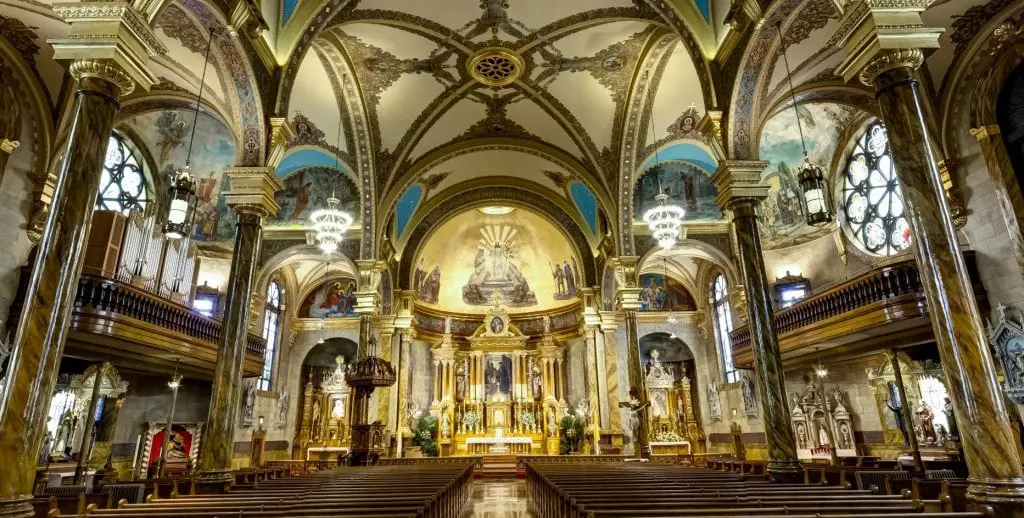
However, the late 1980s saw a revival of the parish, led by Fr.
Frank Phillips, C.R., who became the pastor. Fr. Phillips sparked a renewal that attracted parishioners and financial resources.
As financial stability was regained, he embarked on a mission to restore the physical church to its former grandeur while safeguarding the parish’s numerous treasures.
In 1998, with the endorsement of Francis Cardinal George, Fr.
Phillips established a new brotherhood of men, the Canons Regular of Saint John Cantius, which currently serves the parish.
The gentrification of the surrounding neighborhood, once known as the “Polish Patch” and now called “River West,” further contributed to the renewal of the parish.
This developing area with townhomes and luxury lofts has breathed new life into the community.
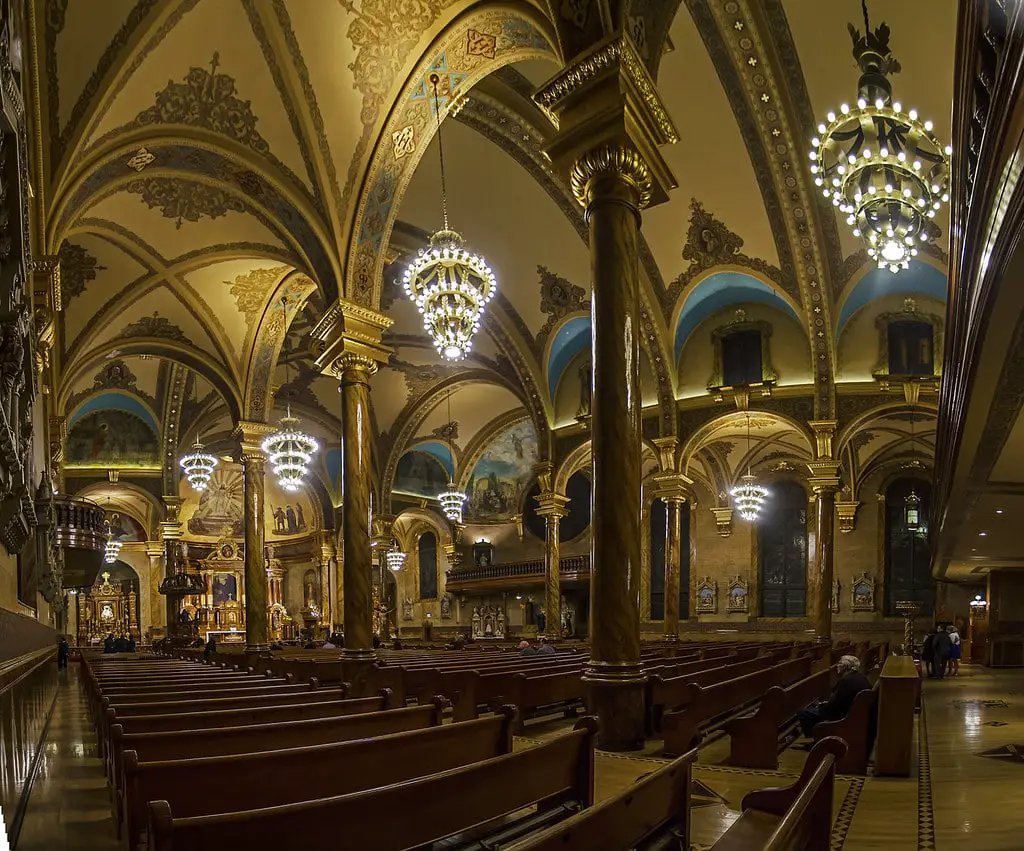
A Focal Center of Tradition
St. John Cantius Church has emerged as a central hub for traditional Latin Catholic rites and devotions sidelined following the Second Vatican Council.
The church is renowned for its Latin Tridentine Mass, the Corpus Christi procession, Tenebrae services, Vespers and Benediction, the Stations of the Cross, and Novenas to St. Joseph and St. Anne.
The parish takes pride in its sacred music program, upheld by an orchestra and eight parish choirs.
Several notable Polish figures, including Tadeusz Mazowiecki, the Prime Minister of the newly-democratic Poland, and Józef Glemp, the Cardinal Primate of Poland, have graced the church.
Polish MP Malgorzata Gosiewska visited St. John Cantius Church in June 2017 during her official trip to Chicago.
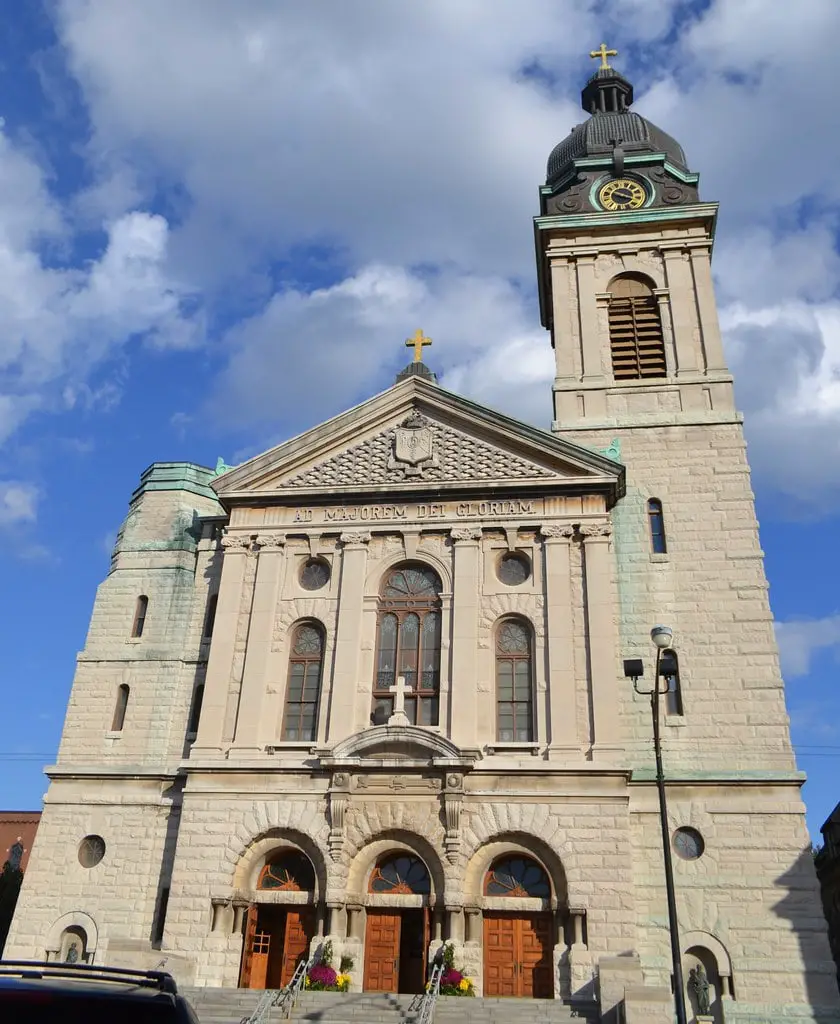
Architectural Splendor and Artistic Heritage
The church’s architecture is a marvel in itself.
The building’s design, by Adolphus Druiding, is a superb structure in the High Renaissance style, with a façade of rusticated stone and classical elements such as columns, capitals, and arches.
The Baroque interior, supported by eight stone columns, is a testament to the sumptuous art and architecture of 18th-century Kraków.
The church’s main altar and matching two side altars originate from the 1893 Columbian Exposition.
Gawin Co. of Milwaukee made the stained glass windows, while the interior murals were painted by Lesiewicz around 1920.
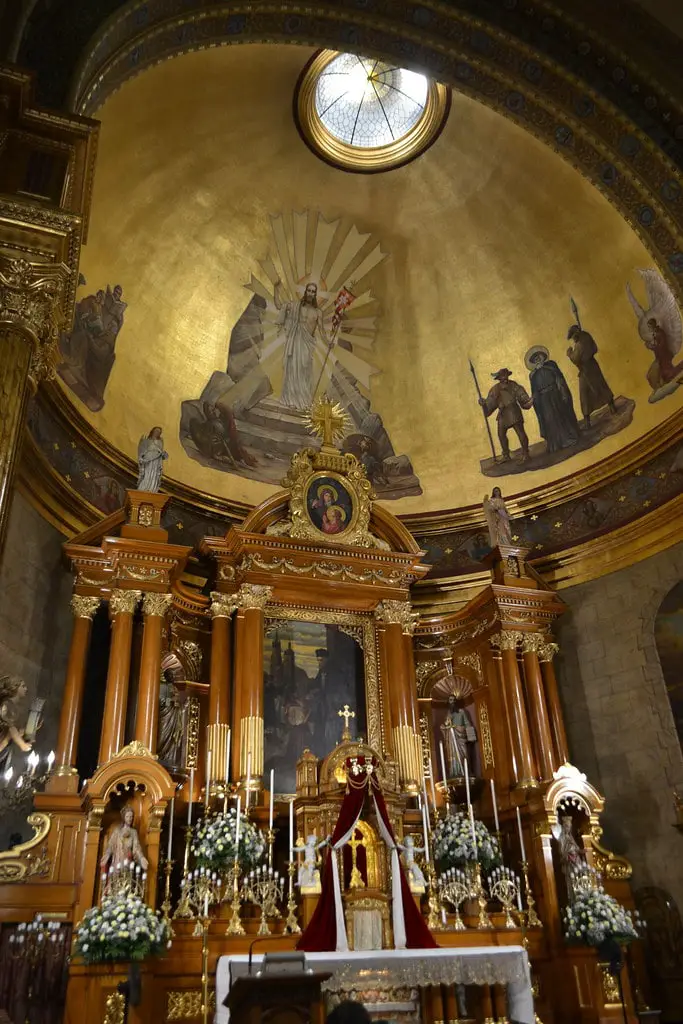
In 1997, an inlaid hardwood floor was installed in a design by Jed Gibbons, using sixteen varieties of wood worldwide.
In 2003, the task of creating a replica of the famed Veit Stoss Altar of St. Mary’s Basilica in Kraków was accomplished.
The intricate work, which took artist Michał Batkiewicz eight years to complete, added another layer of beauty to the church.
Recent Developments
Following Cardinal Cupich’s enforcement of Traditionis custodes, the church discontinued the celebration of the Tridentine Mass during significant occasions such as Christmas, Easter, Pentecost, the Paschal Triduum, and the first Sunday of each month, starting from January 2022.
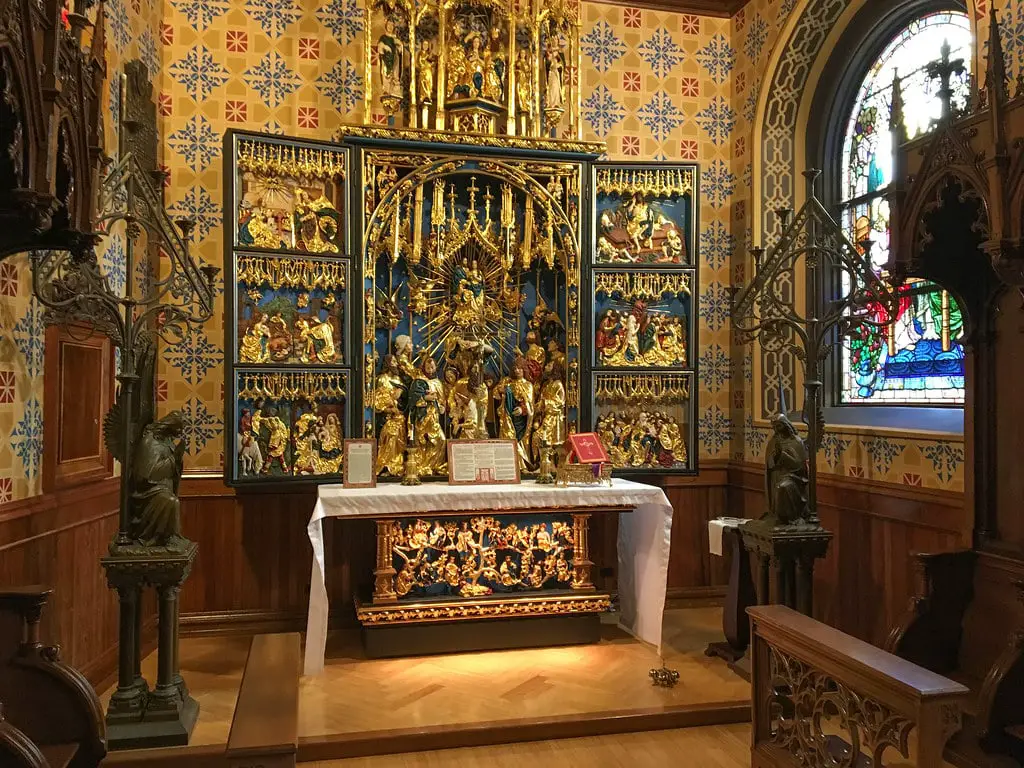
Conclusion
St. John Cantius Church’s story is a testament to its community’s faith and resilience.
Despite the challenges it has faced, the church continues to thrive, serving as a beacon of faith and a symbol of the rich cultural heritage of its community.
The breathtaking architecture, deep-rooted history, and lively community of St. John Cantius Church contribute to its status as a treasured icon in the core of Chicago.

Unfortunately the “restriction” of “The Tridentine Mass” marks a restriction to the Holy Path so significant to the 2000 years growth in following the path laid out by our Messiah. The Tridentine Mass instilled in the hearts of the “people” a reverence and healthy pious demeanor while celebrating the Mass. Born in 1942 in Midland, Michigan, attending school at St. Brigid’s we attended Mass every school day. When sufficiently mature i was trained as an Alter Server. Towards the end of grade school i volunteered all of the requests including serving Mass at the 6:30 am mass celebrated by Monsignor Ilig very disabled requiring assistance at his side throughout the Mass. One time while in a course dealing with life’s forces we were asked the question to recall any significant event that might have occurred in our youth. Immediately i knew the answer. Mass was the answer and in particular serving and especially Monsignor Ilig. After a high Mass with Bishop Woznicki of Saginaw, Michigan; while disrobing in the sacristy i commented to my fellow servers that the secretary to the Bishop would become a cardinal but never a pope. He became Cardinal Hickey, notably of Washington, D.C. The experience of attending Tridentine Mass throughout the school year as well as weekly and Christmas and Easter were deep in my spirit and soul. We followers of the Messiah need to know and if we do not know that we humans are creatures of habit. We eat and use forks and knives from habitual training and constant use. Piety and reverence must become a habit or we begin to lose those traits. Truly it is unfortunate. The path to eternity is littered with “well intended malfeasance” which is seen and implemented as a progressive effort. Many aspects of human behavior need to be preserved and explained so that the young come to realize the values in “habits”. I do not live in Chicago now. And miss Mass at St John Cantius. Tuning Holy Thursday it was heartwarming to see Fr. Al who i got to know as Brother Al. We had many conversations. He began to speak about his considering the priesthood. I was warmed by his quest. I left Chicago in 2010. My only remaining desire to visit Chicago would be to attend Christmas and Easter and stay at the Drake Hotel. During my days of being in attendance i was able to lightly get to know the people that were present. Their hearts were always in warm mode and politeness a given. The church was often packed to the wall space. And when people rose to walk to the communion rail there was a deep quiet with no looking around. Why? The Holy Spirit was in abundance cheering us forward to receive the body and blood of the Messiah. And taking the host in the hand relegates those that do to the level of priesthood. Only the Holy hands of a priest should ever touch the body and blood of Jesus. These recently acquired habits are contributing to the drifting away of the young and middle aged. And lastly i would urge the reading of the “Battle for the American Mind” which explains how the cultural marxists have taken over public education and thus reduction of knowledge of God. Pete Hegseth wrote it and it explains how our society has become what it is and that definitely includes the Catholic Church. Forge forward you canons. March on knowing that change is coming. You may contact me should any of you wish.
Thank you for sharing this memory in detail. The rituals and practices you describe shaped many lives. These are not only personal recollections but windows into a specific era of worship.